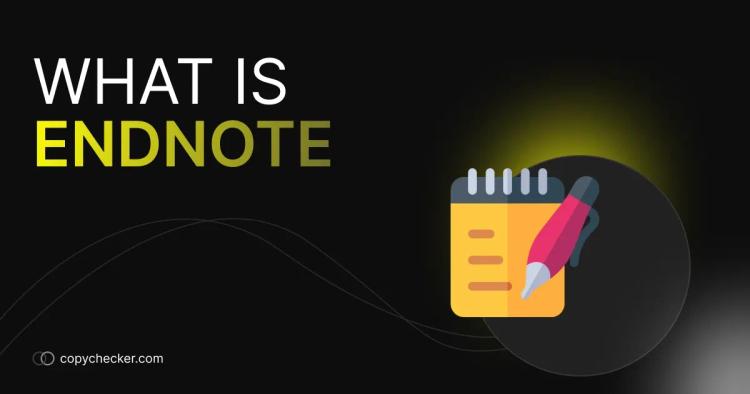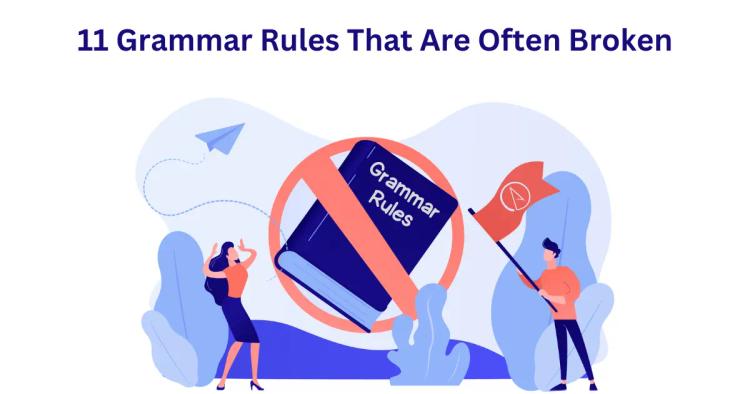Generative AI has come a long way since its inception. Think of it as a journey from simple sketches to intricate masterpieces. Initially, these AI tools could only generate basic text or images, but now they're capable of producing entire novels, lifelike paintings, and symphonies that rival those of the greatest composers.
This evolution has been made possible by advancements in technology, such as neural networks and deep learning algorithms, which have enabled AI systems to learn from vast amounts of data and mimic human creativity.
In this blog post, we'll explore the top 20 Generative AI tools and applications that are making waves in 2024, from text and image generation to music and video synthesis. Get ready to be amazed by the creativity and ingenuity of these AI-powered creations as we delve into the exciting world of Generative AI.
Evolution of Generative AI Tools
The journey of Generative AI tools has been nothing short of remarkable. From humble beginnings to the cutting-edge technologies of today, these tools have evolved exponentially. What started as simple text generation models have now grown into multifaceted systems capable of producing intricate multimedia content.
This evolution has been fueled by advancements in neural networks, data processing capabilities, and the collective efforts of researchers and developers worldwide.
Cutting-edge Generative AI Technologies
At the forefront of Generative AI lie a plethora of cutting-edge technologies, each pushing the envelope in its respective domain. From GPT (Generative Pre-trained Transformer) models for text generation to GANs (Generative Adversarial Networks) for image synthesis, the toolkit of Generative AI is vast and diverse.
These technologies leverage the power of deep learning to analyze patterns, understand contexts, and generate content that rivals human creativity.
Top 5 Text Generation Tools
-
GPT-4: Developed by OpenAI, GPT-4 represents the pinnacle of text generation technology. With its vast knowledge base and contextual understanding, GPT-4 can generate coherent and contextually relevant text on a wide range of topics.
-
BERT: Bidirectional Encoder Representations from Transformers (BERT) by Google is another groundbreaking text generation tool. It excels in understanding the nuances of language and can generate text with remarkable accuracy and fluency.
-
XLNet: XLNet is renowned for its ability to capture long-range dependencies in text, making it proficient in generating coherent and contextually rich content. Its advanced architecture enables it to excel in various natural language processing tasks.
-
CTRL: Developed by Salesforce, CTRL is tailored for generating text in specific domains, making it ideal for specialized applications such as technical writing, legal documents, and scientific reports.
-
DALL-E: Created by OpenAI, DALL-E specializes in generating images from textual descriptions, blurring the lines between text and visual content. It's particularly adept at generating imaginative and surreal images based on user inputs.
Application examples and features:
-
GPT-4: Used in chatbots, content generation, and virtual assistants.
-
BERT: Powering search engine algorithms, question-answering systems, and sentiment analysis tools.
-
XLNet: Deployed in machine translation, document summarization, and dialogue systems.
-
CTRL: Employed in automated report generation, content recommendation engines, and chatbots for specific industries.
-
DALL-E: Revolutionizing creative design, conceptual art, and visual storytelling.
Top 5 Image Generation Tools
-
StyleGAN3: The third iteration of NVIDIA's StyleGAN series, StyleGAN3, pushes the boundaries of image synthesis with unparalleled realism and diversity. Its ability to generate high-resolution images with fine-grained control over attributes has revolutionized the field of computer-generated imagery.
-
BigGAN: Developed by Google, BigGAN leverages the power of large-scale training data and sophisticated architectures to generate high-quality images across diverse categories. Its adaptive design enables it to produce visually appealing images with remarkable fidelity.
-
VQ-VAE-2: Variational Quantum Vector Approximation Encoder-Decoder 2 (VQ-VAE-2) is a novel approach to image generation that combines the principles of variational autoencoders and vector quantization. Its ability to capture complex structures and textures makes it ideal for generating realistic images in constrained environments.
-
PGGAN: Progressive Growing of GANs (PGGAN) is an incremental training technique that enables the generation of high-resolution images with unprecedented fidelity. By progressively adding layers to the generator and discriminator networks, PGGAN can generate images of remarkable detail and realism.
-
GANSpace: GANSpace introduces an innovative approach to image manipulation by disentangling the latent space of GANs. By navigating the latent space, users can control specific attributes of generated images, such as facial expressions, poses, and styles, with remarkable precision.
Examples of generated images and applications:
-
tyleGAN3: Used in virtual fashion design, character creation for games and animation, and generating lifelike portraits.
-
BigGAN: Deployed in image-to-image translation, data augmentation for training datasets, and generating synthetic images for visual inspection.
-
VQ-VAE-2: Applied in medical image reconstruction, image inpainting for restoration, and generating realistic textures for virtual environments.
-
PGGAN: Employed in high-fidelity image generation for advertising, product visualization, and architectural rendering.
-
GANSpace: Revolutionizing image editing and manipulation, artistic expression through digital mediums, and customizing visual content for personalized experiences.
Top 5 Music Generation Tools
-
MuseNet: Developed by OpenAI, MuseNet is a versatile music generation tool capable of composing original pieces across diverse genres and styles. Its ability to understand musical theory and composition principles enables it to create music that resonates with listeners on a profound level.
-
WaveGAN: WaveGAN utilizes generative adversarial networks to synthesize realistic audio waveforms, enabling it to generate high-quality music samples with remarkable fidelity. Its ability to capture the nuances of musical instruments and vocal performances makes it a valuable tool for music production and composition.
-
MusicTransformer: MusicTransformer employs transformer-based architectures to generate musical sequences with intricate melodies and harmonies. Its attention mechanism allows it to capture long-range dependencies in music, enabling it to create compositions that exhibit both coherence and creativity.
-
Jukebox: Developed by OpenAI, Jukebox is a state-of-the-art music generation model capable of composing original songs in various genres and languages. Its ability to generate lyrics and vocal performances adds an extra layer of depth to its compositions, making it a versatile tool for music creators and enthusiasts alike.
-
GrooveNet: GrooveNet specializes in generating rhythmic patterns and drum tracks, making it an invaluable tool for music producers and beatmakers. Its ability to generate dynamic and expressive drum sequences allows musicians to explore new rhythms and grooves with ease.
Musical styles and applications:
-
MuseNet: Used in film scoring, video game soundtracks, and personalized music recommendation systems.
-
WaveGAN: Deployed in audio synthesis for virtual reality experiences, interactive music generation applications, and sound design for multimedia projects.
-
MusicTransformer: Applied in automatic music composition, adaptive music generation for interactive media, and style transfer for music remixing.
-
Jukebox: Employed in generating personalized playlists, virtual concerts, and AI-driven music production studios.
-
GrooveNet: Revolutionizing electronic music production, beatmaking for hip-hop and pop genres, and rhythm generation for dance music.
Top 5 Video Generation Tools
-
DALL-E Video: Building upon the success of DALL-E for image generation, DALL-E Video extends its capabilities to the realm of video synthesis. Its ability to generate dynamic and visually stunning video sequences from textual descriptions opens up new possibilities in content creation and storytelling.
-
Vid2Vid: Vid2Vid is a video-to-video synthesis model that excels in generating realistic video sequences from semantic segmentation maps. Its ability to translate abstract concepts into visual narratives makes it a powerful tool for video editing, special effects, and virtual production.
-
DeepDream: Inspired by the concept of visualizing neural network activations, DeepDream is a mesmerizing video generation tool that creates surreal and dream-like animations from existing footage. Its psychedelic visuals and hallucinatory effects have captivated audiences worldwide, making it a popular choice for artistic expression and experimental filmmaking.
-
Neural Scene Flow Fields: Neural Scene Flow Fields leverage the power of neural networks to generate realistic motion trajectories for dynamic scenes. By predicting the movement of objects in a video sequence, it can generate smooth and coherent animations that seamlessly blend with the original footage, making it ideal for video stabilization and content enhancement.
-
VideoGPT: VideoGPT extends the capabilities of text-based GPT models to video generation, enabling it to generate coherent and contextually relevant video sequences from textual prompts. Its ability to understand the semantics of video content and generate visually coherent narratives makes it a valuable tool for video summarization, storytelling, and content automation.
Video styles and real-world uses:
-
DALL-E Video: Used in advertising campaigns, movie trailers, and virtual reality experiences.
-
Vid2Vid: Deployed in video editing software, special effects for films and TV shows, and virtual production pipelines.
-
DeepDream: Applied in artistic installations, music videos, and experimental cinema.
-
Neural Scene Flow Fields: Employed in video stabilization algorithms, object tracking for surveillance systems, and augmented reality applications.
-
VideoGPT: Revolutionizing content creation for social media platforms, personalized video recommendations, and automated video editing workflows.
The Rise of Generative AI in Creative Industries
Generative AI has ushered in a new era of creativity across various industries, leaving an indelible mark on art, design, and entertainment. From generating captivating visuals to composing emotive music, Generative AI has redefined the creative process, empowering artists, designers, and storytellers to explore new frontiers and express themselves in unprecedented ways.
In the realm of art and design, Generative AI has become a powerful tool for unleashing creativity and exploring new artistic possibilities. Artists are harnessing the capabilities of Generative AI to create intricate digital artworks, interactive installations, and generative sculptures that blur the lines between the physical and the virtual.
In the entertainment industry, Generative AI is revolutionizing the way content is created, consumed, and experienced. Filmmakers are using Generative AI to generate visual effects, create digital doubles of actors, and enhance the overall cinematic experience.
Generative AI in Business and Marketing
Generative AI is not just transforming creative industries; it's also reshaping the landscape of business and marketing. From advertising campaigns to content creation, Generative AI is empowering businesses to connect with consumers in more meaningful ways and drive engagement, conversions, and brand loyalty.
In advertising, Generative AI is enabling brands to create highly personalized and targeted campaigns that resonate with individual consumers on a profound level.
By analyzing vast amounts of data and generating dynamic content tailored to the preferences and interests of each customer, Generative AI is helping brands cut through the noise and deliver messages that capture attention and drive action.
In content creation, Generative AI is empowering businesses to generate vast amounts of high-quality content at scale, reducing the time, cost, and resources required to create compelling content that resonates with audiences.
From blog posts and social media updates to videos and podcasts, Generative AI is helping businesses create a diverse range of content that keeps audiences engaged and coming back for more.
Ethical Considerations in Generative AI
As Generative AI continues to advance and proliferate, it's essential to consider the ethical implications and societal impacts of these technologies. From issues of bias and fairness to concerns about privacy and consent, Generative AI raises a host of ethical questions that must be addressed to ensure these technologies are developed and deployed responsibly.
One of the primary ethical considerations in Generative AI is the issue of bias and fairness. Like all AI systems, Generative AI models are trained on vast amounts of data, which can reflect and perpetuate existing biases and inequalities in society.
From biased training data to biased algorithms, Generative AI can inadvertently amplify and perpetuate stereotypes, discrimination, and unfairness in the content it generates. As such, it's essential to implement robust measures to detect, mitigate, and prevent bias in Generative AI systems to ensure they produce fair and equitable outcomes for all.
Another ethical consideration in Generative AI is the issue of privacy and consent. Generative AI has the potential to generate highly realistic and convincing content, including images, videos, and audio recordings, that can be used to manipulate, deceive, or harm individuals and communities.
As such, it's crucial to establish clear guidelines and regulations to govern the responsible use of Generative AI and protect individuals' privacy, dignity, and rights.
The Importance of Grammar in AI-generated Content
In the realm of AI-generated content, grammar plays a crucial role in ensuring clarity, coherence, and readability. Whether it's generating text, images, music, or videos, the ability to convey ideas effectively and accurately relies heavily on using correct grammar and syntax.
From avoiding ambiguities and misunderstandings to enhancing the overall quality and professionalism of the content, proper grammar is essential for creating content that resonates with audiences and drives engagement and comprehension.
Grammar is particularly important in text generation, where the clarity and coherence of the written word can make or break the effectiveness of the content. Whether it's writing blog posts, articles, or marketing copy, AI-generated text must adhere to established grammatical rules and conventions to ensure it's clear, concise, and coherent.
From using correct punctuation and capitalization to structuring sentences and paragraphs effectively, proper grammar is essential for creating text that's easy to read, understand, and engage with.
Introduction to Copychecker's Grammar Checker Tool
Copychecker's Grammar Checker tool is a powerful tool designed to enhance the quality and professionalism of AI-generated content by ensuring it adheres to proper grammar and syntax.
With its advanced algorithms and extensive database of grammar rules and conventions, this tool can identify and correct a wide range of grammatical errors and inconsistencies, including spelling mistakes, punctuation errors, and syntax errors.
One of the key features of Copychecker is its ability to provide feedback and suggestions for users, allowing them to correct errors on the fly and improve the overall quality of their content.
Whether it's highlighting misspelled words, suggesting alternative phrasing, or flagging grammatical errors, it helps users produce polished and professional-looking content with ease.
How Copychecker Enhances AI-generated Content
Copychecker's Grammar Checker tool goes beyond simple error detection and correction; it also helps enhance the overall readability and coherence of AI-generated content. By identifying and correcting grammatical errors and inconsistencies, it ensures that the content flows smoothly and is easy to read and understand.
Whether it's removing redundant words, clarifying ambiguous phrases, or restructuring sentences for clarity, Copychecker helps users create content that's engaging, informative, and professional.
Use Cases of Copychecker's Grammar Checker Tool
Copychecker is invaluable for a wide range of use cases, from writing blog posts and articles to crafting marketing copy and business communications. Whether you're a content creator, marketer, or business owner, it can help you produce polished and professional-looking content that resonates with your audience and drives engagement and conversions.
Here are some examples of how Copychecker's Grammar Checker tool can be used:
-
Writing blog posts and articles: Copychecker's Grammar Checker tool helps ensure that your blog posts and articles are free from grammatical errors and inconsistencies, allowing you to present your ideas clearly and professionally.
-
Crafting marketing copy: Whether you're writing website copy, email newsletters, or social media posts, Copychecker's Grammar Checker tool helps you create compelling and persuasive content that effectively communicates your message and drives action.
-
Business communications: From writing reports and proposals to drafting emails and memos, Copychecker's Grammar Checker tool ensures that your business communications are polished and professional, helping you maintain a positive brand image and build credibility with your audience.
Copychecker's Impact on Content Marketing and SEO
Copychecker's Grammar Checker tool plays a crucial role in content marketing and search engine optimization (SEO) by helping businesses create high-quality, error-free content that resonates with audiences and ranks well in search engine results.
Whether you're writing blog posts, articles, or website copy, Copychecker's Grammar Checker tool ensures that your content is free from grammatical errors and inconsistencies, allowing you to present your ideas clearly and professionally.
Copychecker's Role in Language Learning and Education
Copychecker's Grammar Checker tool is also a valuable tool for language learning and education, helping students and educators improve their writing skills and master the nuances of grammar and syntax.
Whether you're a student writing essays and research papers or an educator grading assignments and providing feedback, Copychecker's Grammar Checker tool can help you identify and correct grammatical errors and inconsistencies, allowing you to produce polished and professional-looking writing with ease.
FAQs
What are Generative AI Tools?
Generative AI tools are software applications that use artificial intelligence algorithms to create new content, such as text, images, music, or videos, based on patterns and data they've been trained on.
How do Generative AI Tools work?
Generative AI tools work by learning patterns and structures from large datasets and then generating new content based on that knowledge. They use techniques such as neural networks and deep learning to understand context, style, and semantics, enabling them to produce creative and original output.
What industries can benefit from Generative AI Tools?
Various industries can benefit from Generative AI tools, including entertainment, marketing, education, healthcare, and more. These tools can automate content creation, personalize user experiences, assist in research and development, and even aid in artistic expression, offering innovative solutions across diverse domains.
Conclusion: Harnessing Generative AI with Copychecker
In conclusion, Generative AI holds immense promise for reshaping the way we create, consume, and interact with content. From generating text, images, music, and videos to enhancing creativity and productivity across various industries and domains, Generative AI is revolutionizing the creative process and pushing the boundaries of human imagination.
However, with great power comes great responsibility, and it's essential to ensure that these technologies are developed and deployed responsibly, ethically, and inclusively.
As we look to the future, the possibilities of Generative AI are truly limitless, and with tools like Copychecker's Grammar Checker, we can harness the full potential of these technologies to create a future where creativity knows no bounds.




